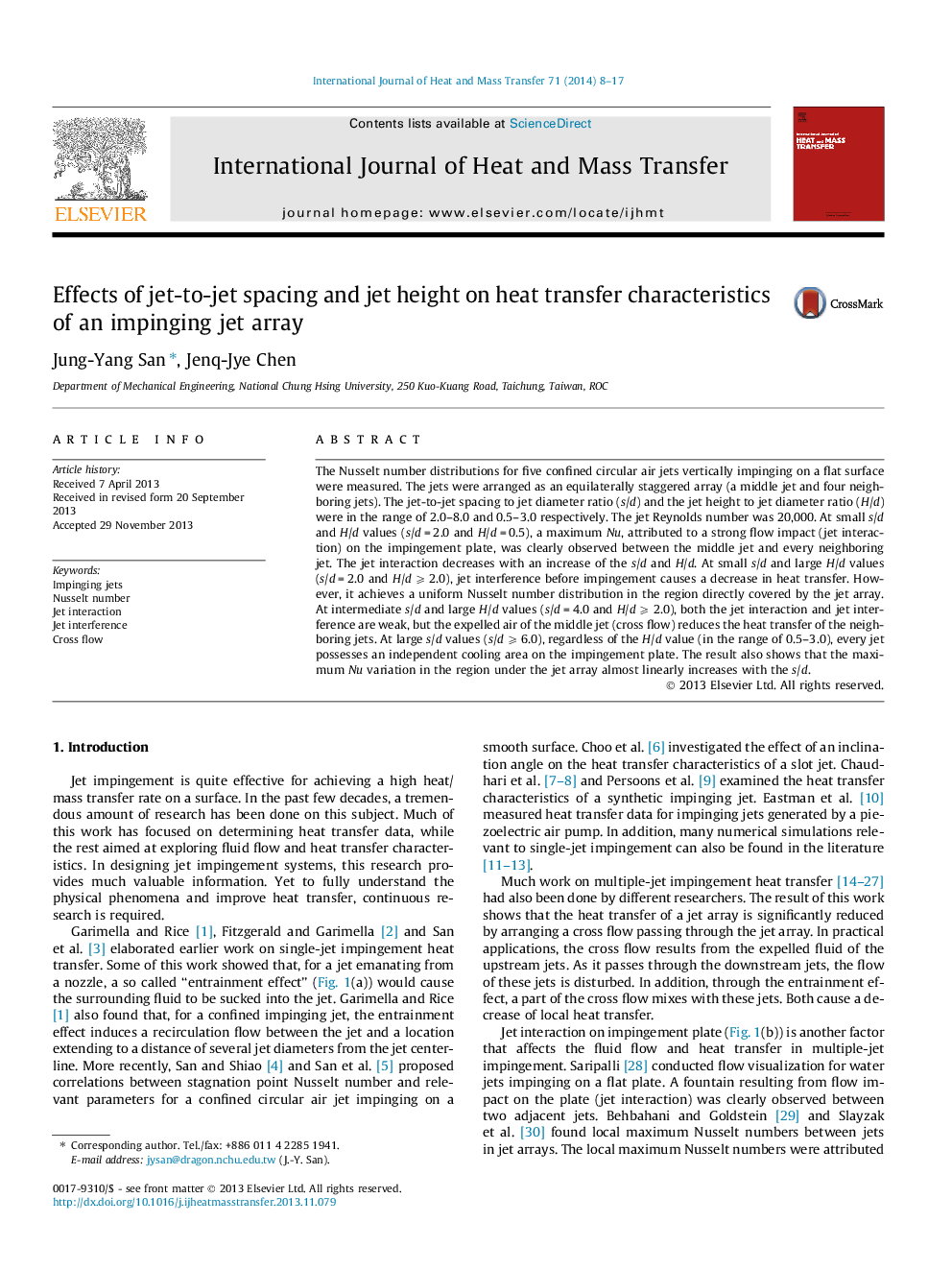| Article ID | Journal | Published Year | Pages | File Type |
|---|---|---|---|---|
| 7057429 | International Journal of Heat and Mass Transfer | 2014 | 10 Pages |
Abstract
The Nusselt number distributions for five confined circular air jets vertically impinging on a flat surface were measured. The jets were arranged as an equilaterally staggered array (a middle jet and four neighboring jets). The jet-to-jet spacing to jet diameter ratio (s/d) and the jet height to jet diameter ratio (H/d) were in the range of 2.0-8.0 and 0.5-3.0 respectively. The jet Reynolds number was 20,000. At small s/d and H/d values (s/d = 2.0 and H/d = 0.5), a maximum Nu, attributed to a strong flow impact (jet interaction) on the impingement plate, was clearly observed between the middle jet and every neighboring jet. The jet interaction decreases with an increase of the s/d and H/d. At small s/d and large H/d values (s/d = 2.0 and H/d ⩾ 2.0), jet interference before impingement causes a decrease in heat transfer. However, it achieves a uniform Nusselt number distribution in the region directly covered by the jet array. At intermediate s/d and large H/d values (s/d = 4.0 and H/d ⩾ 2.0), both the jet interaction and jet interference are weak, but the expelled air of the middle jet (cross flow) reduces the heat transfer of the neighboring jets. At large s/d values (s/d ⩾ 6.0), regardless of the H/d value (in the range of 0.5-3.0), every jet possesses an independent cooling area on the impingement plate. The result also shows that the maximum Nu variation in the region under the jet array almost linearly increases with the s/d.
Related Topics
Physical Sciences and Engineering
Chemical Engineering
Fluid Flow and Transfer Processes
Authors
Jung-Yang San, Jenq-Jye Chen,
